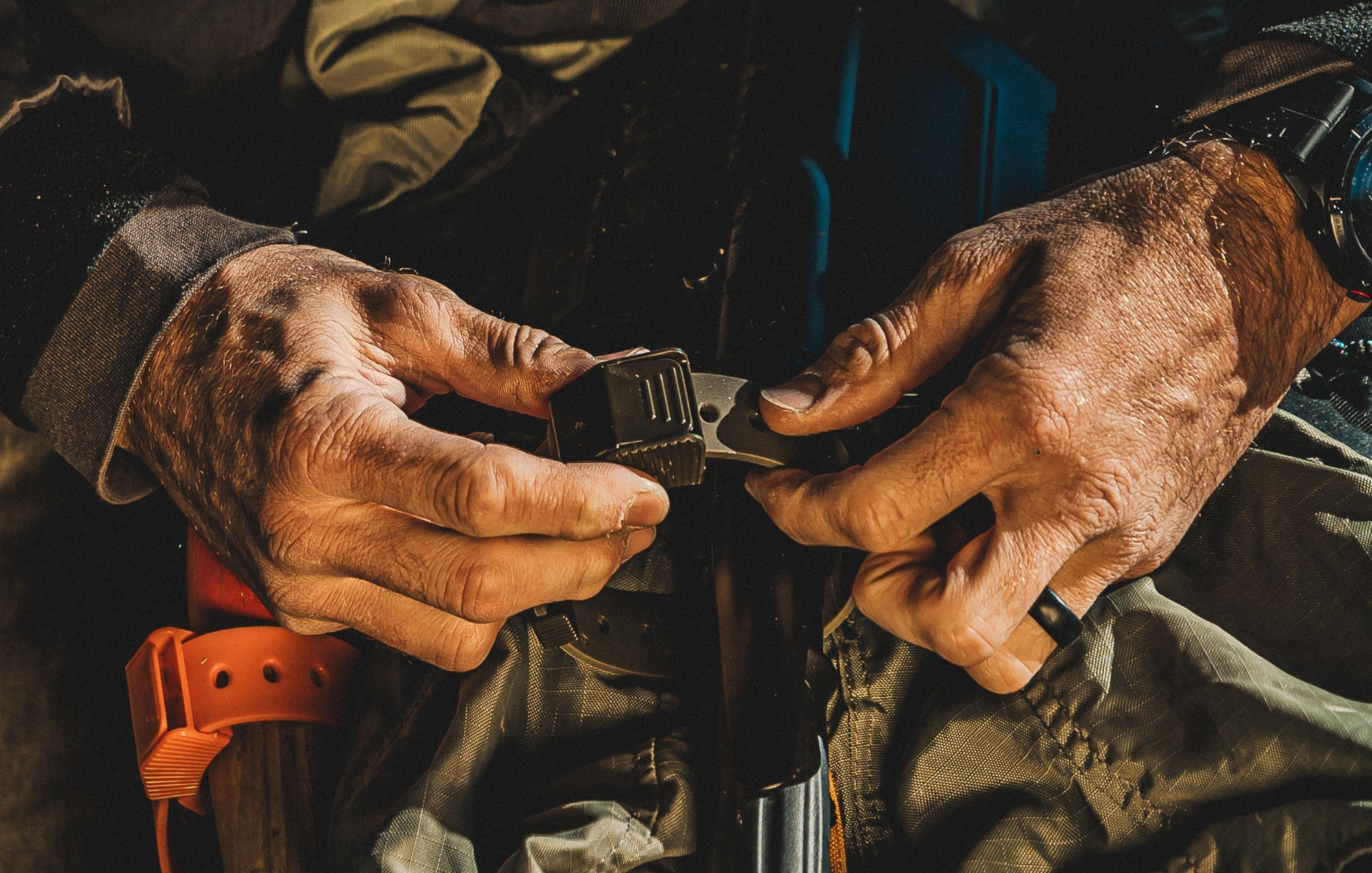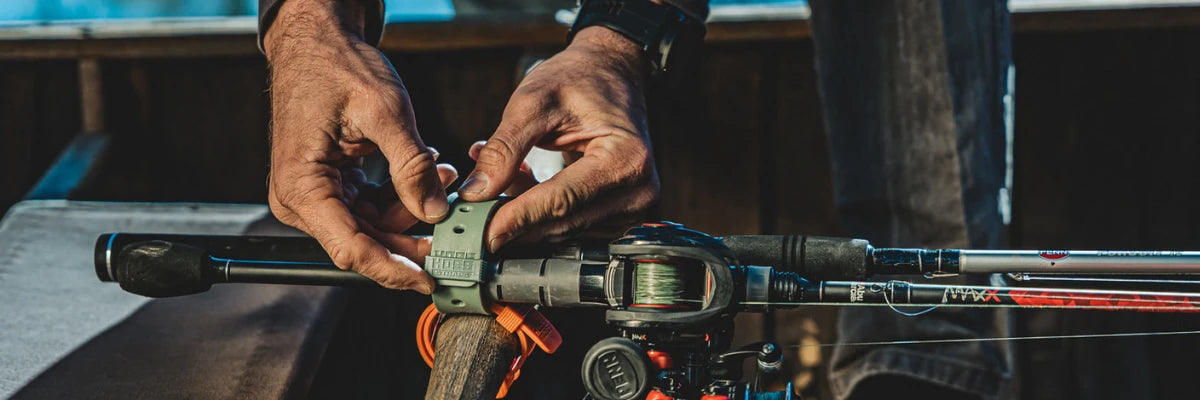How to Choose the Right Size Dog Collar Strap?

Your dog's collar is more than just gear—it's their lifeline to safety, comfort, and your peace of mind. Whether you're hiking mountain trails, training in the backyard, or simply taking an everyday walk, the right-sized collar strap keeps your dog secure, comfortable, and ready for anything. But finding that perfect fit takes more than guessing. Let's walk through what every dog owner needs to know about choosing the right collar size.
Why the Right Collar Size Matters
A properly fitted collar does three critical things: it keeps your dog safe, it ensures their comfort, and it supports effective control during walks and training. According to experts, an ill-fitting collar can cause serious problems—a collar that's too tight can restrict breathing, damage the trachea, and cause skin irritation or hair loss, while one that's too loose risks your dog slipping out and running into danger.
When you're out on the trail or in the backyard, a well-fitted collar allows your dog to move freely without choking risk during a sudden pull. It also keeps ID tags and tracking devices securely in place, which is essential if your dog ever gets separated from you. For dogs that love water, many experts recommend waterproof options that prevent bacteria growth and that persistent "wet dog collar" smell, especially after swimming or muddy play.
Measuring Your Dog's Neck: The Golden Rule
Accurate measurement is the foundation of a perfect fit. Here's how to do it right:
Use a soft measuring tape or, if you don't have one handy, grab a phone charger cable—wrap it gently around your dog's neck at the widest part, mark where it meets the connector, then measure that segment with a ruler.
Measure at the base of the neck, just above the shoulders where the collar will naturally sit. Avoid measuring too high near the ears or too far back on the shoulders, as this throws off your measurement.
Add the two-finger rule space: After measuring, add enough space so two fingers fit comfortably between the tape and your dog's neck. According to veterinarians, the two-finger rule is the standard for safe collar fit—snug enough that your dog can't slip out, loose enough to prevent choking.
For example, if your dog's neck measures 16 inches, you'd add about 2 inches for that finger-space buffer. Your ideal collar size range would be approximately 18 inches.
Size Ranges for All Dogs: From Tiny to Giant
Every dog deserves a properly fitted collar, regardless of size. Here's how major sizes break down:
X-Small (up to 15 lbs): Dachshunds, Shih Tzus, Yorkshire Terriers. Collar range: 8"–12". These tiny companions need lightweight, narrow collars to avoid strain.
Small (20–35 lbs): Beagles, French Bulldogs, Miniature Schnauzers. Collar range: 10"–16". Still requiring slim collars but with enough durability for active play.
Medium (30–50 lbs): Australian Shepherds, Bulldogs, Shetland Sheepdogs. Collar range: 14"–20". The sweet spot where collars balance durability and comfort.
Large (50–80 lbs): Boxers, German Shepherds, Labrador Retrievers. Collar range: 18"–26". These dogs need sturdy, well-distributed pressure across wider collars.
X-Large (90–150 lbs): Great Danes, Mastiffs, Rottweilers. Collar range: 20"–28". Extra-large frames require heavy-duty construction to handle their power.
According to sizing experts, measuring at the correct neck position is critical—collars should sit high on the neck, just behind the ears, rather than low on the throat.
Features That Set Adventure-Ready Collars Apart
Not all collars are created equal, especially if your dog lives for outdoor adventures. Here's what separates gear that lasts from gear that fails:
Durable Materials: BioThane, neoprene, and coated nylon are the materials built to withstand real-world use. BioThane feels like leather but performs like technical outdoor gear—it won't crack, fade, or absorb odors. Neoprene (the same material in wetsuits) is lightweight and gentle on sensitive necks. Coated nylon offers a budget-friendly option, though coatings can wear over time.
Adjustability: Dogs grow fast, and even adult dogs' weight fluctuates. An adjustable collar with multiple holes means you're not constantly buying replacements as your dog changes.
Rust-Proof Hardware: D-rings and buckles should be stainless steel or brass. Cheap hardware corrodes, breaks, and becomes a safety liability during outdoor adventures.
Quick-Release Features: Breakaway collars with quick-release buckles can literally save your dog's life. If your collar catches on a branch, fence, or another dog during play, that split-second release prevents choking or strangulation. For active, adventurous dogs, this feature is non-negotiable.
Secure Tag Attachment: Proper hardware for ID tag attachment matters more than people realize. For active dogs, use heavy-duty S-hooks rather than split rings that can stretch and lose tags during rough play.
Growing Dogs: When to Check and Adjust
Puppies surprise you with how fast they grow. Large breed puppies can gain 30+ pounds in less than a year, and even small breeds change proportions as they develop. Check your puppy's collar fit weekly—what fits perfectly today might be too tight next week.
Watch for warning signs: redness around the neck, hair loss, your puppy constantly scratching at the collar, or difficulty breathing. These mean it's time to size up immediately. Even adjustable collars have limits, so don't be surprised if you need to buy a new one as your puppy transitions to adult size.
Collars for Training and Outdoor Activities
The right collar supports your training goals. Standard flat collars work well for everyday use and basic training, but if your dog is a puller or prone to escaping, martingale-style collars gently tighten when pulled, then relax when your dog walks properly. For active training sessions and outdoor adventures, choose collars with sturdy D-rings that can handle leash attachment without stretching or failing.
For dogs that love water, waterproof collars prevent the odor problems associated with traditional fabric that stays damp. These materials dry quickly and resist bacterial growth, so your gear basket stays fresh whether your dog is lake diving or trudging through muddy trails.
Common Mistakes When Sizing Dog Collars
Measuring in the wrong spot: Many owners measure at the ears or shoulders instead of the base of the neck, throwing off their size by an inch or more. A slight measurement error can be the difference between perfect and problematic.
Ignoring growth phases: Puppies' bodies change dramatically, and even as they reach adult size, their proportions shift. What fit at 3 months won't fit at 12 months.
Prioritizing style over function: A beautiful collar that's too loose or too tight isn't beautiful—it's dangerous. Always measure and test fit first.
Not checking regularly: Dogs gain weight, lose weight, grow fur seasonally. Adult dogs should have their collar fit checked monthly. Senior dogs, especially those with health changes, might need checks every few weeks.
Ignoring discomfort signs: Behavioral changes like constant scratching, avoiding you when the collar appears, or seeming stressed during walks are all red flags that the fit is wrong.
Why Hoss Straps Dog Collar Straps Stand Out
When you're looking for gear built to match your dog's adventurous spirit, quality matters. Hoss Straps dog collar straps are engineered for dogs that live the outdoor lifestyle—durable, adjustable, and designed to handle real-world use from daily walks to challenging hikes.
Built with adventure-tested materials that resist weather, UV damage, and bacteria growth, Hoss Straps collars won't fall apart after a season of serious use. The adjustability means your collar grows with your dog through different life stages, and the secure attachment points keep ID tags and GPS trackers locked in place, even during active play or training.
Whether your dog is a weekend trail companion or an everyday backyard buddy, having gear that performs as hard as your dog works makes every outing better. Explore Hoss Straps dog collar options to find the perfect fit for your adventure partner.
Taking Care of Your Collar for Long-Term Durability
A quality collar is an investment. Keep it performing at its best with simple care:
Rinse after muddy or sandy play: Most quality collars can handle a quick rinse with fresh water. For stubborn dirt, use mild soap and warm water, then air dry completely.
Check hardware regularly: Inspect D-rings, buckles, and stitching for wear, rust, or loose threads. Catch damage early before it becomes a safety issue.
Store it dry: Whether you have multiple collars or rotate them, keep them in a cool, dry place away from direct sunlight, which fades colors and weakens materials over time.
Replace when needed: Even quality collars eventually show wear. Frayed edges, cracked buckles, or permanent deformation mean it's time for a new one—don't compromise your dog's safety to stretch the collar's lifespan.
Frequently Asked Questions
How often should I check my dog's collar fit?
For puppies, check the fit weekly since they're growing rapidly. For adult dogs, a monthly check is sufficient for most. Senior dogs or those with weight fluctuations should be checked every few weeks. Use the two-finger rule each time: you should be able to slide two fingers comfortably between the collar and your dog's neck.
Can a dog slip out of a properly sized collar?
In normal circumstances, no. A properly fitted collar using the two-finger rule should sit snug enough that your dog can't back out of it. However, some breeds with slim heads (like Greyhounds) may slip standard flat collars. For these dogs, martingale or limited-slip collars prevent escape while tightening gently when the dog pulls, making them safer and more effective.
What's the difference between breakaway and traditional collars?
Traditional collars are designed to stay securely on your dog at all times. Breakaway collars feature quick-release buckles that open under pressure, preventing choking if the collar gets caught on branches, fences, or other objects. According to pet safety experts, breakaway collars reportedly prevent injuries that affect over 26,000 dogs annually. The trade-off: breakaway collars are easier for your dog to accidentally release, so they're best for supervised outdoor play rather than all-day wear.
Should puppies wear adjustable or fixed-size collars?
Adjustable collars are the smarter choice for puppies since they can adapt as your dog grows, saving money and preventing constant replacements. However, you'll still need to replace collars as your puppy approaches adult size—adjustability only goes so far. Check the fit weekly and plan to size up as your puppy grows.
How do I know if my dog's collar is causing skin irritation?
Watch for redness, hair loss around the neck, persistent scratching or chewing at the collar, discharge, odor, or behavioral changes like avoiding you when the collar appears. Some dogs may also show signs of discomfort like whining when you adjust or remove the collar. If you notice any of these, remove the collar immediately, check for proper fit, and consider switching to a softer, padded material if your dog has sensitive skin. Neoprene and natural fiber collars are gentler options for sensitive necks.
Your dog depends on you to get the details right, and collar sizing is one of those details that truly matters. Take the time to measure accurately, check the fit regularly, and choose quality gear built to last. With the right collar, your dog is ready for whatever adventure comes next. Check our strap collections today!







